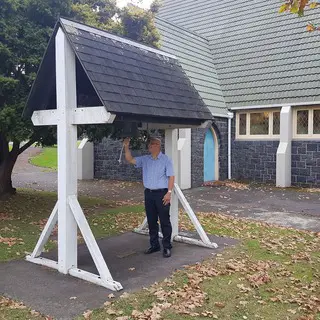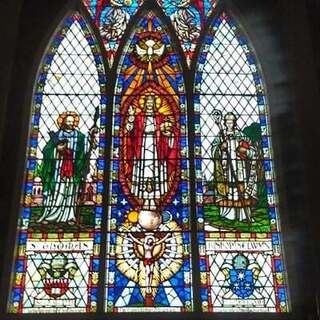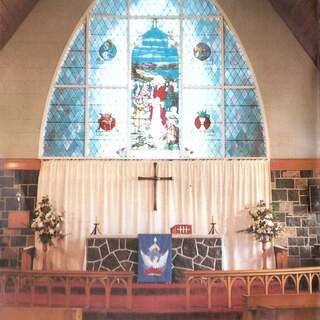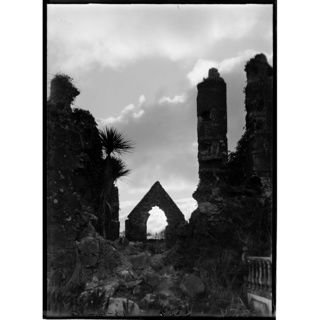We found 63 more Anglican churches near Kohimarama
 Albany Greenhithe Anglican Church, North Shore (12.87 miles)
Albany Greenhithe Anglican Church, North Shore (12.87 miles) St Paul's Church, Auckland (4.39 miles)
St Paul's Church, Auckland (4.39 miles) Anglican Community Church of Birkdale and Beach Haven, North Shore (4.75 miles)
Anglican Community Church of Birkdale and Beach Haven, North Shore (4.75 miles)
 St John's Church, North Shore (11.18 miles)
St John's Church, North Shore (11.18 miles) Anglican Parish of Devonport, North Shore (3.65 miles)
Anglican Parish of Devonport, North Shore (3.65 miles) St George's, Epsom (3.89 miles)
St George's, Epsom (3.89 miles) St Andrew's Church, Epsom (4.76 miles)
St Andrew's Church, Epsom (4.76 miles) Saint Columba Church, Grey Lynn (6.22 miles)
Saint Columba Church, Grey Lynn (6.22 miles) St. Margaret's Anglican Church, Hillsborough (5.83 miles)
St. Margaret's Anglican Church, Hillsborough (5.83 miles) St Andrew's, Mission Bay (1.18 miles)
St Andrew's, Mission Bay (1.18 miles) Anglican Parish of Milford, Milford (7.9 miles)
Anglican Parish of Milford, Milford (7.9 miles) St Luke's, Mt Albert (6.48 miles)
St Luke's, Mt Albert (6.48 miles) St John the Baptist, North Shore (6.92 miles)
St John the Baptist, North Shore (6.92 miles) St Oswald's Anglican Church, One Tree Hill (3.61 miles)
St Oswald's Anglican Church, One Tree Hill (3.61 miles) St Peter's Anglican Church, Pakuranga (3.8 miles)
St Peter's Anglican Church, Pakuranga (3.8 miles) Holy Trinity Cathedral, Parnell (3.92 miles)
Holy Trinity Cathedral, Parnell (3.92 miles) St Aidan's Church, Remuera (2.6 miles)
St Aidan's Church, Remuera (2.6 miles) St Peter's Church, North Shore (7.11 miles)
St Peter's Church, North Shore (7.11 miles) St Elizabeth Anglican Church, Clendon Park (11.55 miles)
St Elizabeth Anglican Church, Clendon Park (11.55 miles) St James Anglican Church, Orakei (1.35 miles)
St James Anglican Church, Orakei (1.35 miles) St Paul's, Kaiwaka (4.84 miles)
St Paul's, Kaiwaka (4.84 miles) Christ Church, Alfriston (4.84 miles)
Christ Church, Alfriston (4.84 miles) St Mary By The Sea, Torbay (12.93 miles)
St Mary By The Sea, Torbay (12.93 miles) Holy Trinity, Devonport (3.65 miles)
Holy Trinity, Devonport (3.65 miles) Christ The King, Mangawhai (7.9 miles)
Christ The King, Mangawhai (7.9 miles) Christ Church, Waiwera (4.84 miles)
Christ Church, Waiwera (4.84 miles) All Saints, Birkenhead (7.48 miles)
All Saints, Birkenhead (7.48 miles) Holy Cross, Albany Village (12.87 miles)
Holy Cross, Albany Village (12.87 miles) St Oswald, One Tree Hill (3.61 miles)
St Oswald, One Tree Hill (3.61 miles) Selwyn Church, Mangere East (6.96 miles)
Selwyn Church, Mangere East (6.96 miles) St Barnabas, Glenfield (9.35 miles)
St Barnabas, Glenfield (9.35 miles) All Hallows, Campbells Bay (8.59 miles)
All Hallows, Campbells Bay (8.59 miles) Church Of The Ascension, Point Chevalier (7.91 miles)
Church Of The Ascension, Point Chevalier (7.91 miles) St Mark's, Swanson (4.84 miles)
St Mark's, Swanson (4.84 miles) St David's, Wiri (10.74 miles)
St David's, Wiri (10.74 miles) St Michael And All Angels, Henderson (11.96 miles)
St Michael And All Angels, Henderson (11.96 miles) St Mark's, Remuera (3.65 miles)
St Mark's, Remuera (3.65 miles) St Martin's At St Chad's, Sandringham (6.5 miles)
St Martin's At St Chad's, Sandringham (6.5 miles) St Peter's, Beach Haven (10.08 miles)
St Peter's, Beach Haven (10.08 miles) St Augustine's, Stanley Bay (4.24 miles)
St Augustine's, Stanley Bay (4.24 miles) St Paul's, Auckland City (4.38 miles)
St Paul's, Auckland City (4.38 miles) St Thomas Anglican Church, Whitford (8.51 miles)
St Thomas Anglican Church, Whitford (8.51 miles) St Catherine's, Okaihau (4.84 miles)
St Catherine's, Okaihau (4.84 miles) St. Elizabeth's Anglican Church, Clendon (11.54 miles)
St. Elizabeth's Anglican Church, Clendon (11.54 miles) Holy Trinity, Otahuhu (5.26 miles)
Holy Trinity, Otahuhu (5.26 miles) St Paul's, Flat Bush (6.47 miles)
St Paul's, Flat Bush (6.47 miles) St Margaret's, Hillsborough (5.83 miles)
St Margaret's, Hillsborough (5.83 miles) St Paul's, Kawakawa (4.86 miles)
St Paul's, Kawakawa (4.86 miles) St Francis, Titirangi (7.31 miles)
St Francis, Titirangi (7.31 miles) Pauanui Community Church, Pauanui (4.84 miles)
Pauanui Community Church, Pauanui (4.84 miles) St Peter's, Waipu (4.65 miles)
St Peter's, Waipu (4.65 miles) St Paul's, Te Atatu Peninsula (11.06 miles)
St Paul's, Te Atatu Peninsula (11.06 miles) St Alban The Martyr, Balmoral (5.51 miles)
St Alban The Martyr, Balmoral (5.51 miles) Old All Saints, Howick (5.25 miles)
Old All Saints, Howick (5.25 miles) St John's Campbells Bay, Campbells Bay (9.79 miles)
St John's Campbells Bay, Campbells Bay (9.79 miles) St George's, Epsom (3.89 miles)
St George's, Epsom (3.89 miles) Church Of The Saviour, Blockhouse Bay (8.88 miles)
Church Of The Saviour, Blockhouse Bay (8.88 miles) Holy Trinity, Mataitai (13.61 miles)
Holy Trinity, Mataitai (13.61 miles) St Andrew's, Glen Eden (11 miles)
St Andrew's, Glen Eden (11 miles) St Luke's, Manurewa (11.17 miles)
St Luke's, Manurewa (11.17 miles) St Matthew-in-the-city, Auckland City (4.81 miles)
St Matthew-in-the-city, Auckland City (4.81 miles) Christ Church, Papakura (14.3 miles)
Christ Church, Papakura (14.3 miles) St Aidan's, Remuera (2.6 miles)
St Aidan's, Remuera (2.6 miles)
Who we are
St Thomas Anglican Church welcomes Christians and those who seek to connect to Christianity in the Kohimarama area.
We aim to make contact with and encourage others to join us in our life-changing Christian journey.
We are a friendly Christian community where we welcome others to join us in our worship and service to God.
Our vision is to make an impact for God, here in Kohimarama, Auckland by helping people understand the enriching messages of eternal hope given to us by Jesus Christ through His words and deeds.
Everyone is welcome, no matter your age, beliefs, or background. Come just as you are - we'd love to get to know you better.
We aim to make contact with and encourage others to join us in our life-changing Christian journey.
We are a friendly Christian community where we welcome others to join us in our worship and service to God.
Our vision is to make an impact for God, here in Kohimarama, Auckland by helping people understand the enriching messages of eternal hope given to us by Jesus Christ through His words and deeds.
Everyone is welcome, no matter your age, beliefs, or background. Come just as you are - we'd love to get to know you better.
Church Address
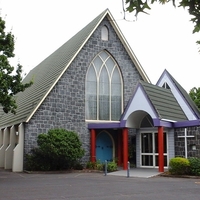
368 Kohimarama Road
Kohimarama,
Auckland
1071
New Zealand
Phone: (09) 521 2697
Download St Thomas Anglican Church vCard with Service Times
Click here to contact the church
Church Pastor

Rev Noel Cox
Priest-in-Charge
368 Kohimarama Road
Kohimarama,
Auckland
1071
New Zealand
Phone: (09) 521 2697
Download Priest-in-Charge Rev Noel Cox vCard with bio
Click here to contact Rev Noel Cox
Denomination
Anglican Church
Anglican Churches in Kohimarama, Auckland
Anglican Churches in Auckland
Anglican Churches in New Zealand
Anglican Churches near me
All churches in Kohimarama, Auckland
Affiliations
Church Website
St Thomas Anglican Church on Social Media
Leadership
Leader Name:
Rev Noel Cox
Leader Position:
Priest-in-Charge
Formal Title:
Leader Address:
Phone:
Fax:
Leader Email:
Click here to contact Rev Noel Cox
Leader Bio:
LLB LLM(Hons) MTheol(Hons) PhD Auckland MA Lambeth MChap Otago GradDipTertTchg AUT LTh Lampeter FGCM FRHistS Barrister-at-Law Inner Temple
Noel was previously stationed at Avondale, Warkworth, and Sandringham, and before that in Wales, having originally trained for ministry in Auckland. He combines his duties at St Thomas with the position of Port Chaplain for the Mission to Seafarers Auckland Inc. He is also the Regional Chaplain, Northern, for St John New Zealand, responsible for some 25 chaplains in the northern part of the North Island.
He was previously a senior legal academic (Auckland University of Technology and Aberystwyth University, where he was Professor of Law, and Head of the Department of Law and Criminology), and also a barrister (Inner Temple, and New Zealand). He is the author of a number of chapters, articles (published in such journals as Churchman, Law and Justice, Journal of Anglican Studies, Journal of Law and Religion, Rutgers Journal of Law and Religion, and the Ecclesiastical Law Journal), and books (including Church and State in the Post-Colonial Era: The Anglican Church and the Constitution in New Zealand (Polygraphia (NZ) Ltd, Auckland, 2008), and Priest of the Church or priest of a church: the ecclesiology of ordained local ministry (Rowman & Littlefield, London, 2021). He is a Fellow of the Royal Historical Society, and a Fellow of The Guild of Church Musicians, and formerly a Distinguished Academic Associate of the Centre for Law and Religion.
Noel is married to Katy, and they have two small dogs, Teddy and Wilbur, and one cat, Clara, who rules them all.
Noel was previously stationed at Avondale, Warkworth, and Sandringham, and before that in Wales, having originally trained for ministry in Auckland. He combines his duties at St Thomas with the position of Port Chaplain for the Mission to Seafarers Auckland Inc. He is also the Regional Chaplain, Northern, for St John New Zealand, responsible for some 25 chaplains in the northern part of the North Island.
He was previously a senior legal academic (Auckland University of Technology and Aberystwyth University, where he was Professor of Law, and Head of the Department of Law and Criminology), and also a barrister (Inner Temple, and New Zealand). He is the author of a number of chapters, articles (published in such journals as Churchman, Law and Justice, Journal of Anglican Studies, Journal of Law and Religion, Rutgers Journal of Law and Religion, and the Ecclesiastical Law Journal), and books (including Church and State in the Post-Colonial Era: The Anglican Church and the Constitution in New Zealand (Polygraphia (NZ) Ltd, Auckland, 2008), and Priest of the Church or priest of a church: the ecclesiology of ordained local ministry (Rowman & Littlefield, London, 2021). He is a Fellow of the Royal Historical Society, and a Fellow of The Guild of Church Musicians, and formerly a Distinguished Academic Associate of the Centre for Law and Religion.
Noel is married to Katy, and they have two small dogs, Teddy and Wilbur, and one cat, Clara, who rules them all.
Rev Noel Cox on Social Media:
Other Church Leaders:
Leadership Photos
Add a Photo
Administration
Admin Name:
Admin Position:
Admin Address:
Phone:
Fax:
Admin Email:
Click here to contact the church
Mailing Address
PO Box 25462
St Heliers, Auckland
1740
St Heliers, Auckland
1740
Driving Directions
Travel/Direction Tips
Know how to get there? Share the knowledge with others!
Parking
Please share parking information and/or parking experience!
St Thomas Anglican Church Service Times
Eucharist every Sunday at 9:00am
Services are accompanied by an Organ and congregational singing, and follow A New Zealand Prayer Book.
It's been more than 2 years since the last service times update. Please make sure to contact the church to confirm service times.
Please contact the church to confirm Service Times or SUBSCRIBE to updates below
Services are accompanied by an Organ and congregational singing, and follow A New Zealand Prayer Book.
It's been more than 2 years since the last service times update. Please make sure to contact the church to confirm service times.
Please contact the church to confirm Service Times or SUBSCRIBE to updates below
Worship Languages
Dress Code
Sunday School / Children and Youth Activities
Under 12s:
Under 18s:
Local outreach & community activities
Other activities & ministries
Special Needs/Accessibility
Prayers and Hymns
Main Bible:
Hymns and Songs:
Other information
Average Adult Congregation:
Average Youth Congregation:
Additional Info:
St Thomas Anglican Church Kohimarama Photos
St Thomas Anglican Church History
THE OLD ST THOMAS'
In 1843, the 24 residents of Tamaki were anxious to have their own place of worship. Each resident was approached for a cash or labour contribution and Bishop Selwyn offered to subsidise their donations pound for pound. Alex Shepherd (Colonial Treasurer) and a Presbyterian, offered a 6 acre site and Bishop Selwyn subsidised it.
The Kohimarama block as divided into its original farm allotments. The shaded which later comprised the St. Johns College estate.
There were no denominational barriers and settlers knew and appreciated Bishop Selwyn’s broad-minded attitude for he welcomed to Anglican services any members of other Protestant denominations who had no places of worship of their own.
With some ceremony the foundation stone was laid on St. Thomas’ Day, Thursday 21st December 1843, by Acting Governor Willoughby Shortland. The Church was designed to later become the chancel of a larger building and was named St. Thomas.
Newspaper reports tell us that the ceremony took place “in the presence of a very numerous and respectable assembly of the town and country inhabitants.”
“The respectable part of the spectators then adjourned to a tent where refreshments of every description were provided for them by the Tamaki gentlemen.”
It is thought the Bishop suggested that the church should be built of volcanic rock for he is said to have had an Englishman’s love of stone buildings.
Settlers’ drays and bullock wagons were used to carry basalt rock from the vicinity of Mt. Wellington and sand from Mission Bay beach. Shingles for the roof came from a Coromandel saw pit.
The stone walls were loop holed for guns so that if families needed refuge in the church they could protect themselves against attack from Maori tribes.
FIRST SERVICES
The first services were held in St. Thomas’ before its completion, on Sunday 22nd December 1844, a year and a day after the laying of the foundation stone. They were attended, we are told, by “all the respectable settlers in the district and some of the officers of H.M.S. Hazard, with many others from Auckland.” Owing to the absence of the Bishop, who had left early in December on a confirmation tour to the scattered settlements of the North Island, the services were conducted by the Rev. Cotton of St. John’s College who, according to the ‘Southern Cross’ report of the proceedings, “preached morning and evening an excellent sermon appropriate to the occasion.”
The native students of the College, we are told, “added much to the solemnity of the service by chanting the Gloria Patri etc and singing the 100th Psalm in English.”
Bishop Selwyn often preached at St Thomas’. Canon Stack’s (from St John’s College) word picture of him is recorded. “It was Bishop Selwyn’s practice when he preached there (St Thomas”) to stand in front of the communion table, but as he warmed to his subject he would step forward and get half-way down the church before he realised that he had moved from his place. Then he would slowly retrace his steps until his back touched the communion rails, but in a few moments, he would move forward again, his handsome face all aglow with the enthusiasm that filled his soul. No-one who ever heard Bishop Selwyn’s voice in the old Church can forget its charm or the thrilling effect produced by his impassioned utterances.”
THE CHURCH HALLS The original hall served the Parish and community well with activities ranging from Sunday School, plays and concerts involving parishioners, pot luck teas, Parish dinners and Fairs, as well as community activities such as Guides, Scottish dancing, Karate, Bridge, Badminton.
MARRIAGES
St. Thomas’ did not seem to have been popular for weddings as only 13 couples were married in the 15 years. After 1847 most of the Tamaki marriages were celebrated in St. John’s Chapel.
BAPTISMS The Baptism register shows the first four children baptised in St. Thomas’ were Joseph Atkin, 2nd March 1845, Charles Wade, 16th March 1845, Mary Andrew, Ist June, 1845, and Mary Embling, 3rd August, 1845. Rev. Cotton officiated. In 1846 Baptisms increased from 4 to 12, and in 1847 there were 8. many were sons and daughters of people from the College. After 1847 it was not possible to tell whether they had been baptised in St. Thomas’, St. John’s or Panmure.
BURIALS The first person interred in St. Thomas’ burial ground was Lady Ann White. mother in law to Commissioner Spain. First to follow Lady White was John Weller, a labourer in 1846. Then Ann Robinson (25) servant 1847, Harata Huhana, Christine McDonald, Robert Muir Wallace (20 months), Ellen Adamson (44) 1850. One of the saddest services must have been the 17 year old bride Matilda Fairburn, 1851, only 9 months after her marriage in the same church.
The Cemetery continued to be used for 70 years although there were only 30 burials, many coming from other parishes. During the 70’s and 80’s the burial ground was advertised in the Church Gazette, the fee which included digging the grave, was 5 pounds.
One of the reasons so few of the monuments have been preserved is possibly due to the fact that many were made of wood and were destroyed when a fire swept through the churchyard in the 1920’s.
In 1956, the Vestry gave an undertaking to Mr. Stevenson to have the area around the graves suitably attended to. The custodian of Purewa Cemetery supervised the dismantling, moving and repairing of the stones.
ABANDONMENT St. Thomas had a special place in the heart of this community. However, the stone soon showed signs of crumbling – the basalt stone was too soft and the seawater used to mix the cement, and the beach sand contained too much salt.
After 1859, the Church was abandoned because it was unsafe. Creeper was planted to hold the stones together.
The roof collapsed in 1905 and the windows and walls gradually caved in. The remains became unsafe and were demolished in 1954.
The stones from the first St. Thomas’ Church were carefully replaced in an outline of the original building. There is a lawn inside and recently a tree was planted – given by the present Vestry and Vicar and it will be dedicated on 6th November by Archbishop Davis.
Many of the trees planted when the new Church was built are large and thriving and the headstones from the original graves have been relocated beside the ruins.
THE ST THOMAS RUINS
1843 – 1859 Saint Thomas’ Tamaki by Allan Curnow
Bishop George Selwyn grew tired of wood; Like Solomon he desired permanent materials, Home comforts for his traveller God, Cypress and spire, background for burials.
So rock hardly cool from the crater Assumed devout posture, column and arch Housed the lord fittingly and to the better Credit of his bride and church.
But ocean weather sucked the ill-mixed mortar In as many years as the Norman's nave Had centuries falling; sand, faiths deserter, Made paste for rain to grind his grove.
UBI EPISCOPUS, IBI ECCLESIA.The storm Outgunned in grace the Bishop's praying, blew to his kness the seed of this Cabbage-Palm Whose tufted rood transfixes the toy ruin.
Printed with kind permission of the author
THE NEW ST THOMAS'
After St Thomas’ was abandoned, worship continued at St Johns. In time churches were established at Kohimarama (St Andrews) and St Heliers (St Philips) and for some years these were able to cope with the increase in population. However, by 1957 it was decided that St Philips Parish should be divided and through the generosity of Mr W. Stevenson, St Thomas’ Church was built in a style as close to the character of the original as possible.
A committee had been formed largely from St Philips parishioners and these people worked very hard to establish the new Parish under Reverend Mee and with Rev T. Barton as Assistant Priest.
Mr Stevenson, being the donor, laid the foundation stone of the new St Thomas’ on the 21st December, 1957, St Thomas’ Day. There was an attendance of about 200 people to the service conducted by the Reverend J.A. Mee, Vicar of St Philips. The Vicar of St Thomas’ Church at Freeman’s Bay, Reverend F.L. Irwin, read the lesson (1st Corinthians 3 6-16) The Bishop of Auckland, the Reverend W.J. Simkin, giving the address, told the assembled congregation that he wished it was possible to picture the scene at the laying of the foundation stone of the first church of St Thomas’ 114 years ago to the day. He said that he imagined that there was a much smaller crowd than is at the laying of the foundation stone for the second church.
The completed church was dedicated by the Right Reverend W.J. Simkin on the 21st December 1958. At this, the opening service, two children of the wider Stevenson family were baptised by the Bishop of Auckland. The two children were James Ron and Jan Maree Stevenson.
ORGAN
Mr Jack Butland gave the Organ in 1970. This was a Classical organ – one of two in New Zealand.
BELL TOWER
The bell tower, given by Mrs Barbara and Trevor Cook, was dedicated on Sunday 2nd September 1990.
HALL
In 1992, the Hall was attacked by arsonists and after a total of five attempts, it was finally destroyed. Parish meetings were held to decide whether to demolish the hall and start again or to attempt to reconstruct.
After due consideration, the Building Committee decided to go ahead with plans submitted by Savory Construction. Mr John Good was the negotiator.
Many hours of voluntary work were put in by the building committee and Mr Peter Morgan as supervising Architect. The Centre was handed over on 17th December, 1993, although we were permitted to use the building for our annual fair in November.
We were very grateful for the support given by the Diocesan Committee and for their gift of carpet, which enabled us not only to carpet the new building, but to renew worn carpet in the Church.
Parishioners and firms were generous in responding to our Restoration appeal and we thank the Lotteries Board for its grant towards our new hall, the Auckland Savings Bank who’s grant enabled us to build the extra bays of the hall, and to Trust Bank who gave invaluable assistance in organising our appeal.
The Centre is used for a variety of activities.
The hall was handed over in December, followed a few days later with a service to mark the beginning of the Sesqui Centennial Year.
GIFTS TO THE CHURCH
Stained glass windows
Donated by Mr. Stevenson in memory of his parents.
West end
In the centre light Christ is depicted looking down on the congregation. On the left is St. Thomas and on the right Bishop Selwyn, for whom the original Church of St. Thomas was built. Beneath St. Thomas is the coat of arms of the See of Calcutta, with which the diocese of Auckland is closely associated, and under Bishop Selwyn is the coat of arms of the See of Auckland.
East end
Featuring the miracle of the feeding of the five thousand, with the arresting caption “There is a lad here” with the monograms of the Evangelists Ss. Matthew, Mark, Luke and John on the four supporting panels.
The “Arresting Caption” is a quote from the Gospel of St John, chapter 6 verse 9, which describes the scene; “There is a lad here, which hath five barley loaves and two small fishes: but what are they among so many?”
Organ Mr Jack Butland gave the Organ in 1970. This was a Classical organ – one of two in New Zealand.
The organ is of the type that has no swell boxes.
Other items
Font of Oamaru stone and Hinuera stone and brass ewer Vicar and Vestry St Heliers Bay Parish (1958)
Brass eagle lectern - Mrs Cole. Inscription – “To the glory of God in memory of Revd. Wm Marsden. Du Rieu MA (Cantab) Vicar of St Thomas Union Street, Auckland. 1887 – 1907
Prayer desk and book - Mr and Mrs Putt
Holy bible - Mr Williams
Altar book - Mrs Henderson
Silver goblet - Mr and Mrs S Kingston
Handworked alter cloths & communion linen - Miss Coupland
Pews from the following people - Mr T Barton (3) Mr A Atkinson Mr and Mrs Piper Mr and Mirs Postles Mr P Vos Mr IC Steele Late Mrs Russell Mr Clay Mrs St Clair Brown Mrs Vague Mr and Mrs de Lautour Mr Griffiths Mr and Mrs Willis Mrs Hill Mr and Mrs C Jonas
1/2 Sanctuary carpet - Mr IC Steele
Choir upstand - Mr CR Stead
Small pew - Mrs K McNabb
Small pew - Mr S Reid
Litany desk - Mr J Kidson
Prayer desk and chair - Mrs E Havell
Chair - Miss Bond and Mrs Grant
Offertory Box - Anon
Prayer and hymn books - Anon Mrs Woodward Mrs G Turner
Alms dish and holder - Mr O Wilson
Cross - Mr S Baigent
Flower vases - Mrs F Wallis
Candlesticks - Mrs E Nosworthy
Bread box - St Thomas’ Church, Union St
Furnishings - Anon
Frames photographs of old ruins - Mrs A More
Reredos curtains - Takle and Co
Bread box - In memory of Margaret McGowa
Chalice and patten - Mr R Reid
Red carpet - In memory of Ann Deacon
Two candlesticks - Mr and Mrs R Muller
Peace banner - Mrs J Matthews
Alter frontal cloth - Mrs J Osborne
In 1843, the 24 residents of Tamaki were anxious to have their own place of worship. Each resident was approached for a cash or labour contribution and Bishop Selwyn offered to subsidise their donations pound for pound. Alex Shepherd (Colonial Treasurer) and a Presbyterian, offered a 6 acre site and Bishop Selwyn subsidised it.
The Kohimarama block as divided into its original farm allotments. The shaded which later comprised the St. Johns College estate.
There were no denominational barriers and settlers knew and appreciated Bishop Selwyn’s broad-minded attitude for he welcomed to Anglican services any members of other Protestant denominations who had no places of worship of their own.
With some ceremony the foundation stone was laid on St. Thomas’ Day, Thursday 21st December 1843, by Acting Governor Willoughby Shortland. The Church was designed to later become the chancel of a larger building and was named St. Thomas.
Newspaper reports tell us that the ceremony took place “in the presence of a very numerous and respectable assembly of the town and country inhabitants.”
It is thought the Bishop suggested that the church should be built of volcanic rock for he is said to have had an Englishman’s love of stone buildings.
Settlers’ drays and bullock wagons were used to carry basalt rock from the vicinity of Mt. Wellington and sand from Mission Bay beach. Shingles for the roof came from a Coromandel saw pit.
The stone walls were loop holed for guns so that if families needed refuge in the church they could protect themselves against attack from Maori tribes.
FIRST SERVICES
The first services were held in St. Thomas’ before its completion, on Sunday 22nd December 1844, a year and a day after the laying of the foundation stone. They were attended, we are told, by “all the respectable settlers in the district and some of the officers of H.M.S. Hazard, with many others from Auckland.” Owing to the absence of the Bishop, who had left early in December on a confirmation tour to the scattered settlements of the North Island, the services were conducted by the Rev. Cotton of St. John’s College who, according to the ‘Southern Cross’ report of the proceedings, “preached morning and evening an excellent sermon appropriate to the occasion.”
Bishop Selwyn often preached at St Thomas’. Canon Stack’s (from St John’s College) word picture of him is recorded. “It was Bishop Selwyn’s practice when he preached there (St Thomas”) to stand in front of the communion table, but as he warmed to his subject he would step forward and get half-way down the church before he realised that he had moved from his place. Then he would slowly retrace his steps until his back touched the communion rails, but in a few moments, he would move forward again, his handsome face all aglow with the enthusiasm that filled his soul. No-one who ever heard Bishop Selwyn’s voice in the old Church can forget its charm or the thrilling effect produced by his impassioned utterances.”
THE CHURCH HALLS The original hall served the Parish and community well with activities ranging from Sunday School, plays and concerts involving parishioners, pot luck teas, Parish dinners and Fairs, as well as community activities such as Guides, Scottish dancing, Karate, Bridge, Badminton.
BAPTISMS The Baptism register shows the first four children baptised in St. Thomas’ were Joseph Atkin, 2nd March 1845, Charles Wade, 16th March 1845, Mary Andrew, Ist June, 1845, and Mary Embling, 3rd August, 1845. Rev. Cotton officiated. In 1846 Baptisms increased from 4 to 12, and in 1847 there were 8. many were sons and daughters of people from the College. After 1847 it was not possible to tell whether they had been baptised in St. Thomas’, St. John’s or Panmure.
BURIALS The first person interred in St. Thomas’ burial ground was Lady Ann White. mother in law to Commissioner Spain. First to follow Lady White was John Weller, a labourer in 1846. Then Ann Robinson (25) servant 1847, Harata Huhana, Christine McDonald, Robert Muir Wallace (20 months), Ellen Adamson (44) 1850. One of the saddest services must have been the 17 year old bride Matilda Fairburn, 1851, only 9 months after her marriage in the same church.
The Cemetery continued to be used for 70 years although there were only 30 burials, many coming from other parishes. During the 70’s and 80’s the burial ground was advertised in the Church Gazette, the fee which included digging the grave, was 5 pounds.
In 1956, the Vestry gave an undertaking to Mr. Stevenson to have the area around the graves suitably attended to. The custodian of Purewa Cemetery supervised the dismantling, moving and repairing of the stones.
ABANDONMENT St. Thomas had a special place in the heart of this community. However, the stone soon showed signs of crumbling – the basalt stone was too soft and the seawater used to mix the cement, and the beach sand contained too much salt.
After 1859, the Church was abandoned because it was unsafe. Creeper was planted to hold the stones together.
The roof collapsed in 1905 and the windows and walls gradually caved in. The remains became unsafe and were demolished in 1954.
The stones from the first St. Thomas’ Church were carefully replaced in an outline of the original building. There is a lawn inside and recently a tree was planted – given by the present Vestry and Vicar and it will be dedicated on 6th November by Archbishop Davis.
THE ST THOMAS RUINS
1843 – 1859 Saint Thomas’ Tamaki by Allan Curnow
Bishop George Selwyn grew tired of wood; Like Solomon he desired permanent materials, Home comforts for his traveller God, Cypress and spire, background for burials.
So rock hardly cool from the crater Assumed devout posture, column and arch Housed the lord fittingly and to the better Credit of his bride and church.
But ocean weather sucked the ill-mixed mortar In as many years as the Norman's nave Had centuries falling; sand, faiths deserter, Made paste for rain to grind his grove.
UBI EPISCOPUS, IBI ECCLESIA.The storm Outgunned in grace the Bishop's praying, blew to his kness the seed of this Cabbage-Palm Whose tufted rood transfixes the toy ruin.
Printed with kind permission of the author
THE NEW ST THOMAS'
A committee had been formed largely from St Philips parishioners and these people worked very hard to establish the new Parish under Reverend Mee and with Rev T. Barton as Assistant Priest.
Mr Stevenson, being the donor, laid the foundation stone of the new St Thomas’ on the 21st December, 1957, St Thomas’ Day. There was an attendance of about 200 people to the service conducted by the Reverend J.A. Mee, Vicar of St Philips. The Vicar of St Thomas’ Church at Freeman’s Bay, Reverend F.L. Irwin, read the lesson (1st Corinthians 3 6-16) The Bishop of Auckland, the Reverend W.J. Simkin, giving the address, told the assembled congregation that he wished it was possible to picture the scene at the laying of the foundation stone of the first church of St Thomas’ 114 years ago to the day. He said that he imagined that there was a much smaller crowd than is at the laying of the foundation stone for the second church.
ORGAN
Mr Jack Butland gave the Organ in 1970. This was a Classical organ – one of two in New Zealand.
BELL TOWER
The bell tower, given by Mrs Barbara and Trevor Cook, was dedicated on Sunday 2nd September 1990.
HALL
In 1992, the Hall was attacked by arsonists and after a total of five attempts, it was finally destroyed. Parish meetings were held to decide whether to demolish the hall and start again or to attempt to reconstruct.
After due consideration, the Building Committee decided to go ahead with plans submitted by Savory Construction. Mr John Good was the negotiator.
Many hours of voluntary work were put in by the building committee and Mr Peter Morgan as supervising Architect. The Centre was handed over on 17th December, 1993, although we were permitted to use the building for our annual fair in November.
Parishioners and firms were generous in responding to our Restoration appeal and we thank the Lotteries Board for its grant towards our new hall, the Auckland Savings Bank who’s grant enabled us to build the extra bays of the hall, and to Trust Bank who gave invaluable assistance in organising our appeal.
The Centre is used for a variety of activities.
The hall was handed over in December, followed a few days later with a service to mark the beginning of the Sesqui Centennial Year.
GIFTS TO THE CHURCH
Stained glass windows
Donated by Mr. Stevenson in memory of his parents.
West end
In the centre light Christ is depicted looking down on the congregation. On the left is St. Thomas and on the right Bishop Selwyn, for whom the original Church of St. Thomas was built. Beneath St. Thomas is the coat of arms of the See of Calcutta, with which the diocese of Auckland is closely associated, and under Bishop Selwyn is the coat of arms of the See of Auckland.
The “Arresting Caption” is a quote from the Gospel of St John, chapter 6 verse 9, which describes the scene; “There is a lad here, which hath five barley loaves and two small fishes: but what are they among so many?”
Organ Mr Jack Butland gave the Organ in 1970. This was a Classical organ – one of two in New Zealand.
The organ is of the type that has no swell boxes.
Other items
Font of Oamaru stone and Hinuera stone and brass ewer Vicar and Vestry St Heliers Bay Parish (1958)
Brass eagle lectern - Mrs Cole. Inscription – “To the glory of God in memory of Revd. Wm Marsden. Du Rieu MA (Cantab) Vicar of St Thomas Union Street, Auckland. 1887 – 1907
Prayer desk and book - Mr and Mrs Putt
Holy bible - Mr Williams
Silver goblet - Mr and Mrs S Kingston
Handworked alter cloths & communion linen - Miss Coupland
Pews from the following people - Mr T Barton (3) Mr A Atkinson Mr and Mrs Piper Mr and Mirs Postles Mr P Vos Mr IC Steele Late Mrs Russell Mr Clay Mrs St Clair Brown Mrs Vague Mr and Mrs de Lautour Mr Griffiths Mr and Mrs Willis Mrs Hill Mr and Mrs C Jonas
1/2 Sanctuary carpet - Mr IC Steele
Choir upstand - Mr CR Stead
Small pew - Mrs K McNabb
Small pew - Mr S Reid
Litany desk - Mr J Kidson
Chair - Miss Bond and Mrs Grant
Offertory Box - Anon
Prayer and hymn books - Anon Mrs Woodward Mrs G Turner
Alms dish and holder - Mr O Wilson
Cross - Mr S Baigent
Flower vases - Mrs F Wallis
Candlesticks - Mrs E Nosworthy
Bread box - St Thomas’ Church, Union St
Frames photographs of old ruins - Mrs A More
Reredos curtains - Takle and Co
Bread box - In memory of Margaret McGowa
Chalice and patten - Mr R Reid
Red carpet - In memory of Ann Deacon
Two candlesticks - Mr and Mrs R Muller
Peace banner - Mrs J Matthews
Alter frontal cloth - Mrs J Osborne
St Thomas Anglican Church Historical Photos
 Listen, my friend!
Listen, my friend!
Listen, my friend! Your helplessness is your best prayer. It calls from your heart to the heart of God with greater effect than all your uttered pleas. He hears it from the very moment that you are seized with helplessness, and He becomes actively engaged at once in hearing and answering the prayer of your helplessness.
St Thomas Anglican Church listing was last updated on the 3rd of February, 2023
THANK YOU FOR VISITING ST THOMAS ANGLICAN CHURCH ONLINE!
St Thomas Anglican Church Accelerated Mobile Page (AMP)


